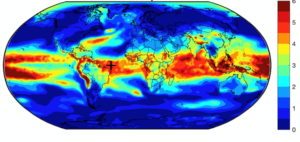by Eric Worall, March 22, 2021 in WUWT
Finland thinks that piles of snow accumulated from road clearing this year are so large, some of the snow will still be frozen when winter returns.
In Finnish capital region, snow piles built up this winter may not melt during summer
FINLAND 15 MARCH 2021
THE CAPITAL REGION of Finland has received so much snow this winter that the metres-high piles hauled to designated snow dump areas may not melt during the course of the summer, reports Helsingin Sanomat.
In Uusimaa, for example, the amount of snow was 1.7 times higher than last year in January, according to Foreca.
Helsingin Sanomat on Friday wrote that the piles of snow stand almost as high as 20 metres at the dump area in Herttoniemi, eastern Helsinki. In Maununneva, a north-western neighbourhood of the city, lorries have dumped roughly 16,000 loads of snow at the dump area, revealed Tero Koppinen, a production manager at Helsinki City Construction Services (Stara).
The snow ploughed from roads forms a large structure, nicknamed by the locals as the Alps, also at the only snow dump area in Espoo, in Vanttila.
…
Read more: https://www.helsinkitimes.fi/finland/finland-news/domestic/18867-snow-piles-built-up-this-winter-may-not-melt-during-summer-in-finnish-capital-region.html
The Fins mostly seem to be treating this as a joke, maybe a chance to cool off on warm Summer days. And most likely this event will have no long term consequences.
But history teaches that when ice ages strike, they can strike abruptly, with very little warning.
12,800 years ago, the world abruptly froze. Temperatures plunged back to ice age conditions, and stayed cold for over 1000 years.
…


